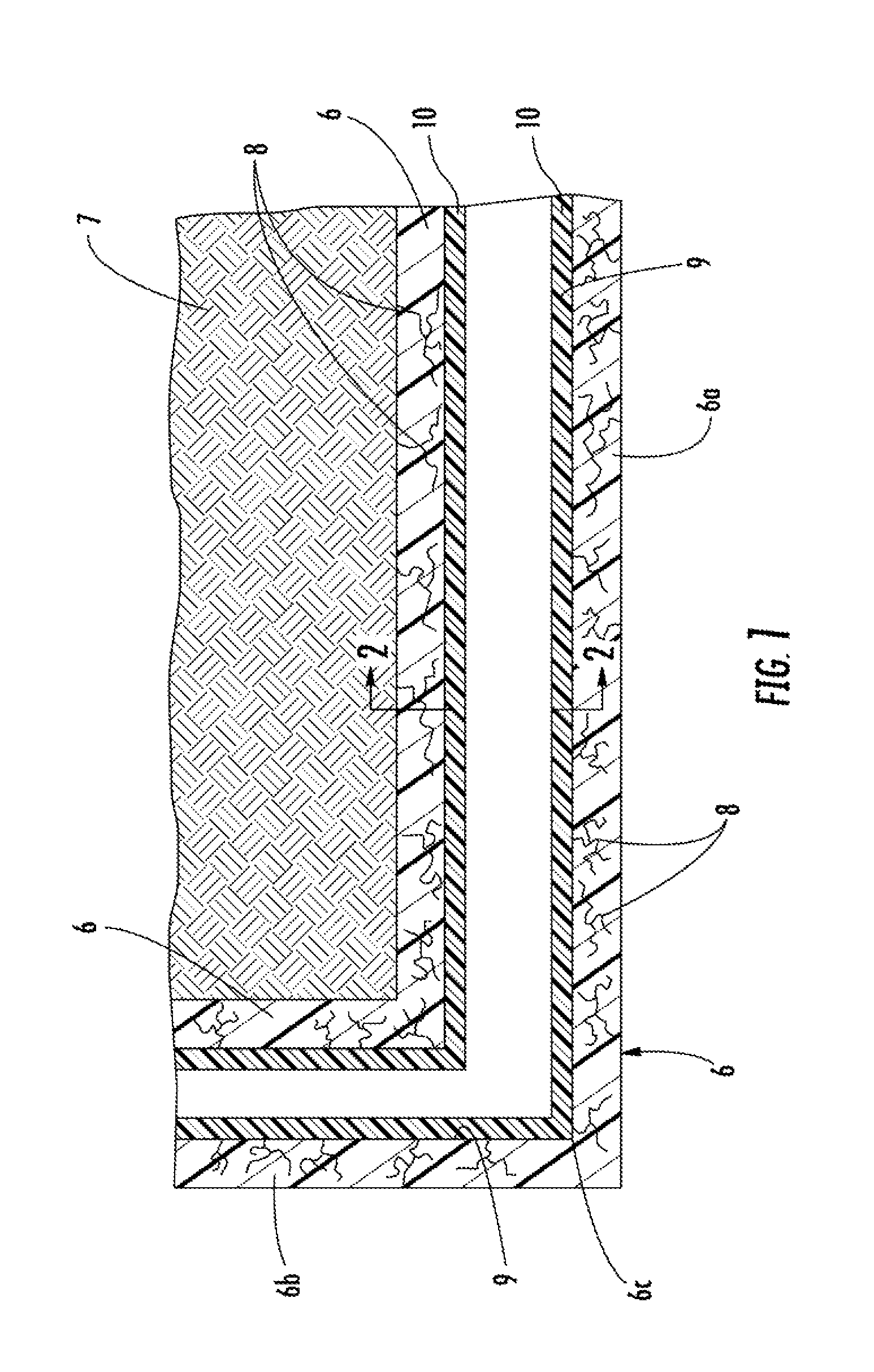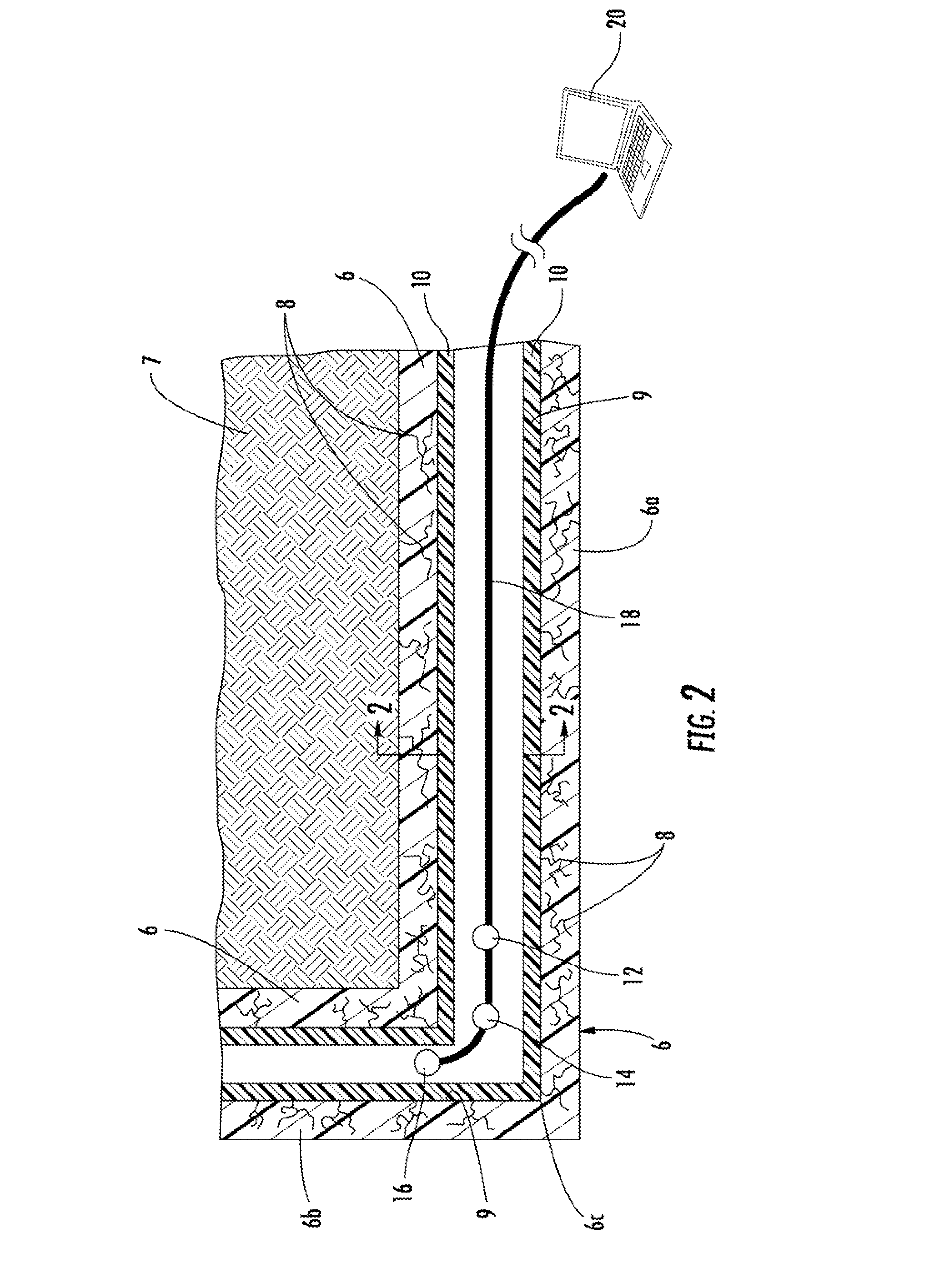System for inspecting and coating the interior of a pipe
a technology for interior inspection and pipe, applied in the direction of hollow article cleaning, mechanical equipment, instruments, etc., can solve the problems of pipeline deterioration, pipeline deterioration, structural breakdown, etc., and achieve the effect of effectively sealing all cracks and faults, reducing time, and being inexpensive to carry ou
- Summary
- Abstract
- Description
- Claims
- Application Information
AI Technical Summary
Benefits of technology
Problems solved by technology
Method used
Image
Examples
Embodiment Construction
[0022]Now referring to the drawings, the method and system for repairing a pipeline in accordance with the teachings of the present invention is shown and generally illustrated in the figures. In summary, the system of the present invention is used to simultaneously inspect and repair a damaged underground pipeline, such as a water line, so that it can used in the normal course without undesirable leaks. As can be understood, cracks and leaks in a fluid line are undesirable to the associated pressure drops and flow inefficiencies. Further, in a cracked pipeline, particles commonly break off from the inner surface of the pipeline thereby contaminating the fluid that flows through the pipeline.
[0023]Referring first to FIG. 1, a side cross-section view of a typical pipeline installation is shown. The pipeline or host pipe 6 is installed in the ground 7 where a number of cracks 8 exist representing undesirable leaks. The pipeline 6 includes a horizontal section 6a and a vertical section...
PUM
 Login to View More
Login to View More Abstract
Description
Claims
Application Information
 Login to View More
Login to View More - R&D
- Intellectual Property
- Life Sciences
- Materials
- Tech Scout
- Unparalleled Data Quality
- Higher Quality Content
- 60% Fewer Hallucinations
Browse by: Latest US Patents, China's latest patents, Technical Efficacy Thesaurus, Application Domain, Technology Topic, Popular Technical Reports.
© 2025 PatSnap. All rights reserved.Legal|Privacy policy|Modern Slavery Act Transparency Statement|Sitemap|About US| Contact US: help@patsnap.com



